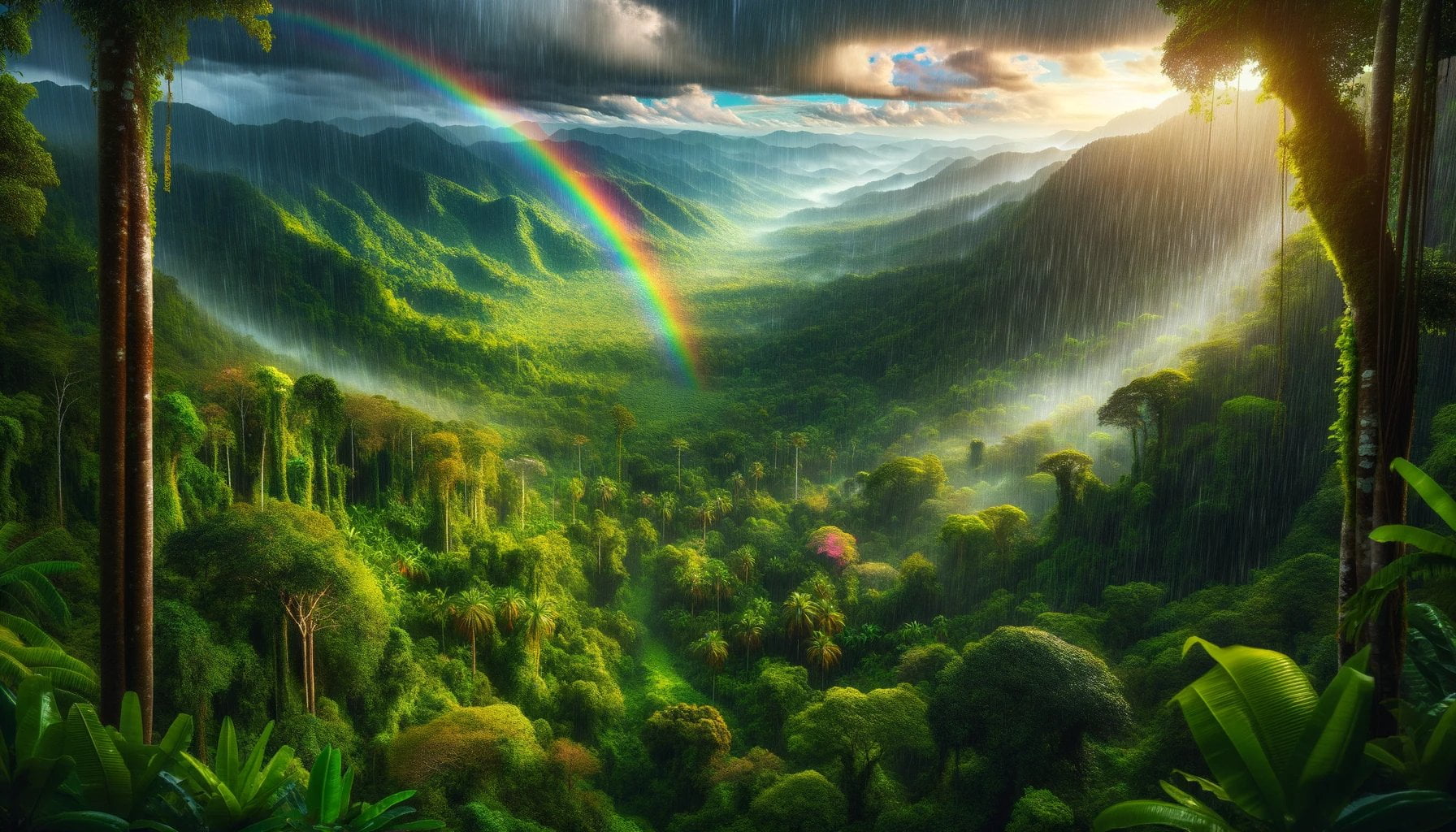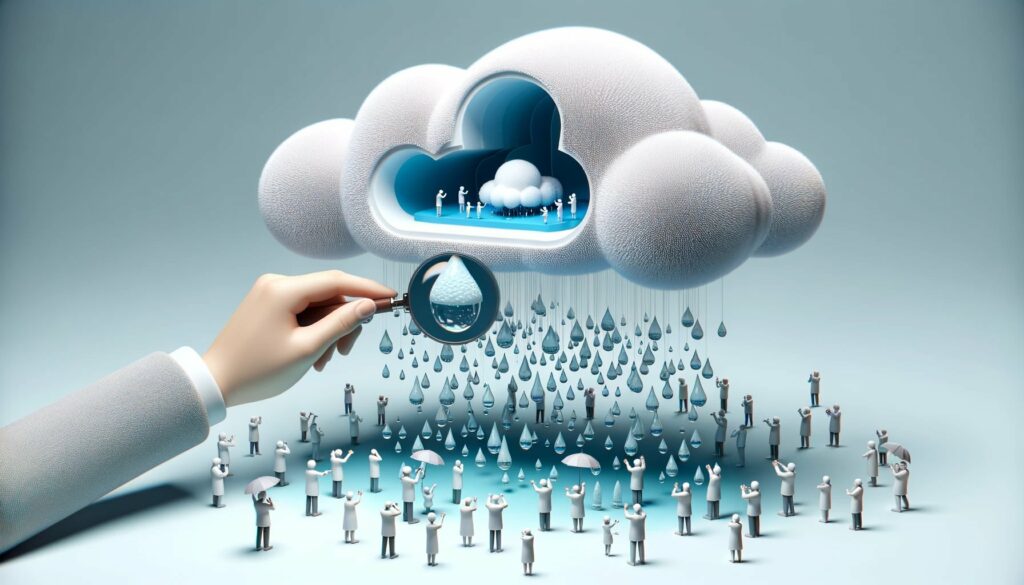Have you ever wondered what causes raindrops to fall from the sky or why snowflakes form intricate patterns? The process of precipitation, which includes rain, snow, sleet, and hail, is a fascinating phenomenon that results from a complex interplay of atmospheric conditions. In this article, we will delve into the scientific principles behind precipitation, exploring concepts such as condensation, cloud formation, and the water cycle. By the end, you will have a clearer understanding of how these natural phenomena occur, and what factors contribute to different types of precipitation.
What is precipitation explain?
Precipitation is a fundamental concept in meteorology that refers to any form of water that falls from the atmosphere to the Earth’s surface. It plays a crucial role in the water cycle, which is responsible for distributing and recycling Earth’s water resources. Let’s dive into the science behind precipitation and explore its different types, how it forms, and why it is so important.
The Science Behind Precipitation
When water evaporates from oceans, lakes, and other water bodies, it rises into the atmosphere as water vapor. As the warm air containing water vapor ascends, it cools down. This cooling causes the water vapor to condense into tiny water droplets or ice crystals, forming clouds. The process of condensation is the first step towards precipitation.
Precipitation occurs when the air becomes saturated with water vapor. This happens when the condensed droplets or crystals grow in size and become heavy enough to fall to the Earth’s surface. Gravity pulls these particles down, and they gather together, forming precipitation.
Types of Precipitation
The most common type of precipitation is rain. Raindrops are liquid water droplets that fall from saturated clouds. They vary in size, from small droplets to larger ones. Other types of precipitation include drizzle, snow, sleet, ice pellets, graupel, and hail.
- Drizzle: Drizzle consists of tiny water droplets less than 0.5 millimeters in diameter. It often falls gently and can create a misty atmosphere.
- Snow: Snow forms when the temperature in the atmosphere is below freezing point, and water droplets freeze into ice crystals. These ice crystals then join together and form snowflakes. Snowflakes are unique in shape and can vary from simple to intricate designs.
- Sleet: Sleet occurs when snowflakes partially melt as they fall through a warm layer in the atmosphere and then refreeze before reaching the surface. This leads to tiny ice pellets.
- Ice Pellets: Ice pellets, also known as “graupel,” form as supercooled water droplets freeze onto snowflakes, creating small, soft balls of ice.
- Hail: Hail is formed in severe thunderstorms with powerful updrafts. It starts as a small ice pellet that is repeatedly lifted back into the cloud where it collects additional layers of ice. The hailstone grows larger until it becomes too heavy for the updrafts to support, and it falls to the ground.
The Importance of Precipitation
Precipitation is vital for maintaining Earth’s water balance and supporting life on our planet. It plays a crucial role in the water cycle by replenishing water sources such as rivers, lakes, and groundwater. Without precipitation, these sources would gradually dry up, leading to severe droughts and water scarcity.
Furthermore, precipitation provides the fresh water that is essential for drinking, bathing, and irrigation, supporting agriculture and food production. It also helps to cleanse and purify the atmosphere by removing pollutants and dust particles.
In Conclusion
Precipitation is the process by which water in the atmosphere condenses and falls to the Earth’s surface. It comes in various forms, including rain, drizzle, snow, sleet, ice pellets, graupel, and hail. Each type has its own unique characteristics and is influenced by different atmospheric conditions.
Understanding precipitation is crucial for comprehending the water cycle and its impact on our environment. It allows us to appreciate the mechanisms behind rainfall, snowfall, and other forms of precipitation, and underscores the importance of water in sustaining life on Earth. So, the next time you see raindrops falling or snowflakes gently landing, take a moment to appreciate the significance of precipitation in our lives.
The water cycle is a fascinating natural process that governs the movement of water on our planet. One crucial aspect of this cycle is precipitation, where water returns to the Earth’s surface in the form of rain, snow, sleet, or hail. Understanding the role of precipitation in the water cycle is essential for comprehending how water moves through different reservoirs and sustains life on Earth. To explore more about precipitation and its connection to the water cycle, click here.
Formation of Precipitation
When you look up at the sky and see rain pouring down or snowflakes gracefully falling, have you ever wondered how it all happens? Let’s dive into the fascinating world of precipitation and explore the formation process of rain, snow, and other forms of this essential natural phenomenon.
Understanding the Basics
Precipitation refers to any form of water that falls from the atmosphere to the Earth’s surface. It is a crucial component of the water cycle, distributing and recycling Earth’s precious water resources. So, how does precipitation actually form?
The Journey Begins in the Clouds
- Formation in the Clouds: Every precipitation event starts within a cloud. As water vapor in the atmosphere cools and condenses, tiny water droplets or ice crystals begin to form.
- Growth of Droplets: These microscopic droplets collide and merge with other droplets around them. As they grow larger, they eventually become too heavy to remain suspended in the air.
- Freezing and Ice Crystal Formation: In colder temperatures, the water droplets may freeze and form ice crystals. This process happens at high altitudes, where temperatures are below freezing.
Falling to Earth: Rain, Snow, and More
- Types of Precipitation: The form that precipitation takes depends on temperature and atmospheric conditions. The most common types include rain, snow, sleet, and hail.
- Rain: Raindrops are liquid water droplets that fall from the clouds and reach the Earth’s surface. This is the most common form of precipitation in many regions.
- Snow: Snow forms when water droplets freeze directly into ice crystals. These delicate ice crystals join together in the clouds and fall as fluffy snowflakes.
- Sleet: Sleet occurs when snowflakes partially melt into raindrops as they descend through a layer of warm air. However, before reaching the ground, these raindrops refreeze into ice pellets.
- Hail: Hail is formed in severe thunderstorms. Updrafts carry raindrops upward into extremely cold regions of the cloud, where they freeze. As additional layers of ice build up, hailstones can grow to various sizes before finally falling to the ground.
The Importance of Precipitation
Precipitation plays a vital role in maintaining Earth’s water balance and supporting life. It replenishes water sources, providing the fresh water necessary for drinking, agriculture, and other essential purposes. Additionally, precipitation serves as a natural cleanser, washing away pollutants from the atmosphere and helping to maintain air quality.
Furthermore, understanding precipitation is crucial for weather forecasting and comprehending climate trends. Different regions experience different types and amounts of precipitation, which can significantly impact climate patterns across the globe. Precipitation data and monitoring are essential tools in predicting weather conditions and planning for water resource management.
To summarize, precipitation is the result of a complex process involving condensation, cloud formation, and water droplet growth. It manifests in various forms like rain, snow, sleet, and hail, depending on temperature and atmospheric conditions. The beauty and significance of precipitation lie in its contribution to the water cycle, providing us with freshwater and shaping our environment.
Now that you have a better understanding of the formation of precipitation, you can appreciate the science behind rain, snow, and more. So next time you feel raindrops on your skin or watch snowflakes drifting peacefully from the sky, take a moment to marvel at the intricate processes that bring them to you.
Role of Precipitation in the Water Cycle
Precipitation plays a crucial role in the water cycle, a continuous process that ensures the distribution and recycling of Earth’s water resources. It not only replenishes the sources of water on land and in the oceans but also provides the moisture required by plants and animals. In this article, we will explore the fascinating science behind precipitation, its various forms, how it forms, and most importantly, its role in the water cycle.
What is Precipitation?
Precipitation refers to any form of water that falls from the atmosphere to the Earth’s surface. It can take the form of rain, drizzle, snow, sleet, ice pellets, graupel, or hail, depending on the prevailing temperature and atmospheric conditions. Raindrops are liquid water droplets, making rain the most common type of precipitation. On the other hand, snow forms when water droplets freeze directly into ice crystals before falling as delicate snowflakes.
How Does Precipitation Form?
Precipitation begins its journey high up in the clouds. As water vapor cools and condenses, tiny water droplets or ice crystals start to form. These droplets or crystals grow larger as they collide and merge with other droplets around them. Eventually, they become too heavy to remain suspended in the air and fall to the Earth’s surface as precipitation.
In colder temperatures, the water droplets may freeze and form ice crystals at high altitudes. These frozen crystals either fall as snowflakes or may undergo further processes to become different types of precipitation. For instance, sleet occurs when snowflakes partially melt into raindrops as they pass through a layer of warm air before refreezing into small ice pellets.
Hail, however, is formed in severe thunderstorms. When raindrops are carried upward into extremely cold regions of the storm cloud, they freeze and undergo a continuous cycle of freezing and thawing. This process creates layers of ice that grow into hailstones before finally falling to the ground.
The Significance of Precipitation in the Water Cycle
Precipitation plays a vital role in maintaining Earth’s water balance and supporting life. Here’s why:
1. Replenishing Water Sources: Precipitation acts as nature’s replenishing agent, refilling rivers, lakes, and other water bodies. It ensures a continuous supply of fresh water for drinking, irrigation, and various other human needs.
2. Sustaining Ecosystems: Precipitation provides the necessary moisture for plants, helping them to grow and thrive. It also creates habitats for numerous organisms in different ecosystems. From the lush rainforests to the arid deserts, precipitation is essential for sustaining biodiversity.
3. Cleaning the Atmosphere: As precipitation falls through the atmosphere, it washes away pollutants and particulate matter, effectively cleansing the air. This process is known as “acid rain,” where rainwater reacts with pollutants and reduces their concentration, contributing to improved air quality.
4. Facilitating the Movement of Water: Precipitation is a key factor in the movement of water through the water cycle. As water falls to the Earth’s surface, it can either flow over the surface as runoff or percolate into the soil, replenishing groundwater. This movement of water influences streams, rivers, and other water bodies, shaping their characteristics and impacting the overall water distribution.
Understanding the Water Cycle: A Precipitation Perspective
When discussing precipitation and its significance, it’s vital to understand how it fits into the larger picture of the water cycle. The water cycle is an intricate process that involves the constant movement of water between the atmosphere, land, and bodies of water. This cycle consists of various stages, including evaporation, transpiration, condensation, and precipitation.
During evaporation, water from oceans, lakes, rivers, and even plants changes from a liquid state to a gaseous state, forming water vapor. This water vapor then rises into the atmosphere, where it eventually cools and condenses into clouds. It is within these clouds that precipitation formation takes place. Ultimately, precipitation acts as the major vehicle by which water returns from the atmosphere to the Earth’s surface, ensuring the perpetuation of the water cycle.
In conclusion, precipitation is a fascinating natural phenomenon with a vital role in the water cycle. Its various forms and processes contribute to the replenishment of Earth’s water sources, sustenance of ecosystems, and cleansing of the atmosphere. By understanding the science behind precipitation, we can truly appreciate the delicate balance of our planet’s water cycle and its profound impact on our environment.
To fully grasp the complexity of precipitation and its role in the water cycle, it’s important to delve deeper into specific types of precipitation and their distinct characteristics. Let’s explore these intriguing variations in more detail below.
Rain: Nature’s Cleansing Agent
Rain is undoubtedly the most common form of precipitation. It occurs when water droplets in the clouds combine and grow in size until they become heavy enough to fall to the Earth’s surface. Raindrops can vary in size from tiny drizzles to heavy downpours, depending on the intensity of the rainfall.
Rain plays a crucial role in the water cycle by replenishing water sources and supporting numerous terrestrial and aquatic ecosystems. It provides essential moisture for plant growth, ensuring the lushness of forests, fields, and gardens. Additionally, rainwater facilitates the movement of water through rivers and streams, contributing to the overall water distribution on our planet.
Snow: A Winter Wonderland
Snow is a remarkable manifestation of precipitation that occurs in cold regions and during colder seasons. It forms when water vapor in the atmosphere undergoes deposition directly from a gaseous state to a solid state without first passing through the liquid phase—creating intricate ice crystals we commonly know as snowflakes.
Snow is a vital source of fresh water once it melts. It plays a significant role in maintaining the water balance in cold regions, where snowmelt contributes to the water supply in rivers, lakes, and reservoirs. This gradual release of melted snow ensures a consistent water supply during the dry seasons. Moreover, snow-covered landscapes provide important insulation for plant and animal life during harsh winter conditions.
Sleet: A Frozen Interlude
Sleet is a peculiar form of precipitation that occurs when snowflakes partially melt and refreeze before reaching the Earth’s surface. This phenomenon arises when a layer of warm air lies between the clouds and the ground, causing the snowflakes to undergo a transformation.
As the partially melted snowflakes encounter the cold layer of air near the surface, they freeze again, forming small ice pellets. These ice pellets—known as sleet—can sometimes accumulate and create hazardous conditions on roads and walkways. Despite its potential inconveniences, sleet serves as a reminder of the complexity of precipitation and the incredible diversity of its forms.
Hail: Nature’s Frozen Artillery
Hail is undoubtedly one of the most awe-inspiring forms of precipitation. It is formed in severe thunderstorms, where powerful updrafts carry raindrops to extremely cold regions within storm clouds. In these frigid conditions, the raindrops freeze and serve as the core that accumulates additional layers of ice, resulting in hailstones.
As hailstones grow, they are subjected to multiple cycles of being carried upward by updrafts and falling back down due to gravity. Each time they are lifted higher, they encounter supercooled water droplets that freeze onto their surface. This continuous process creates concentric layers of ice, eventually forming impressive hailstones of various sizes.
Hail can range from small pellets to large spheres, and its destructive potential is directly proportional to its size. Severe hailstorms can cause damage to crops, vehicles, and buildings. However, hail also serves as a testament to the remarkable ingenuity of nature and the immense forces that shape our weather.
Understanding the different forms of precipitation enriches our knowledge of the water cycle and provides insights into the diverse ways in which water manifests itself. From the gentle touch of rain to the delicate crystalline beauty of snowflakes and the spectacle of crashing hailstones, this fascinating array of precipitation reminds us of the intricate and harmonious balance that sustains our planet.
FAQ
Question 1: What is precipitation?
Answer 1: Precipitation refers to any liquid or frozen water that forms in the atmosphere and falls to the Earth. It is an essential part of the water cycle and includes various forms such as rain, snow, sleet, and hail.
Question 2: How is precipitation formed?
Answer 2: Precipitation is formed when water vapor in the atmosphere condenses into larger droplets or ice crystals in the clouds. When these droplets or crystals become heavy enough, they fall to the Earth due to gravity.
Question 3: What factors determine the type of precipitation that falls?
Answer 3: The type of precipitation that falls depends on the temperature and atmospheric conditions. Rain occurs when water droplets fall from saturated clouds, while snow forms when the temperature is below freezing and the water droplets freeze into ice crystals.
Question 4: Why is precipitation important?
Answer 4: Precipitation is important for several reasons. It replenishes the sources of water on land and in the oceans, provides the moisture required by plants and animals, and contributes to the movement of water through the water cycle. Additionally, precipitation is crucial for weather forecasting and understanding climate trends.
Question 5: How does precipitation impact different regions?
Answer 5: Different regions experience different types and amounts of precipitation, which can significantly affect climate patterns. The distribution of precipitation plays a vital role in determining the availability of freshwater for drinking, agriculture, and other purposes. It also influences the flow of streams, rivers, surface runoff, and groundwater.
“`json
“`
- Crypto Quotes’ Red Flags: Avoid Costly Mistakes - June 30, 2025
- Unlock Inspirational Crypto Quotes: Future Predictions - June 30, 2025
- Famous Bitcoin Quotes: A Deep Dive into Crypto’s History - June 30, 2025



















